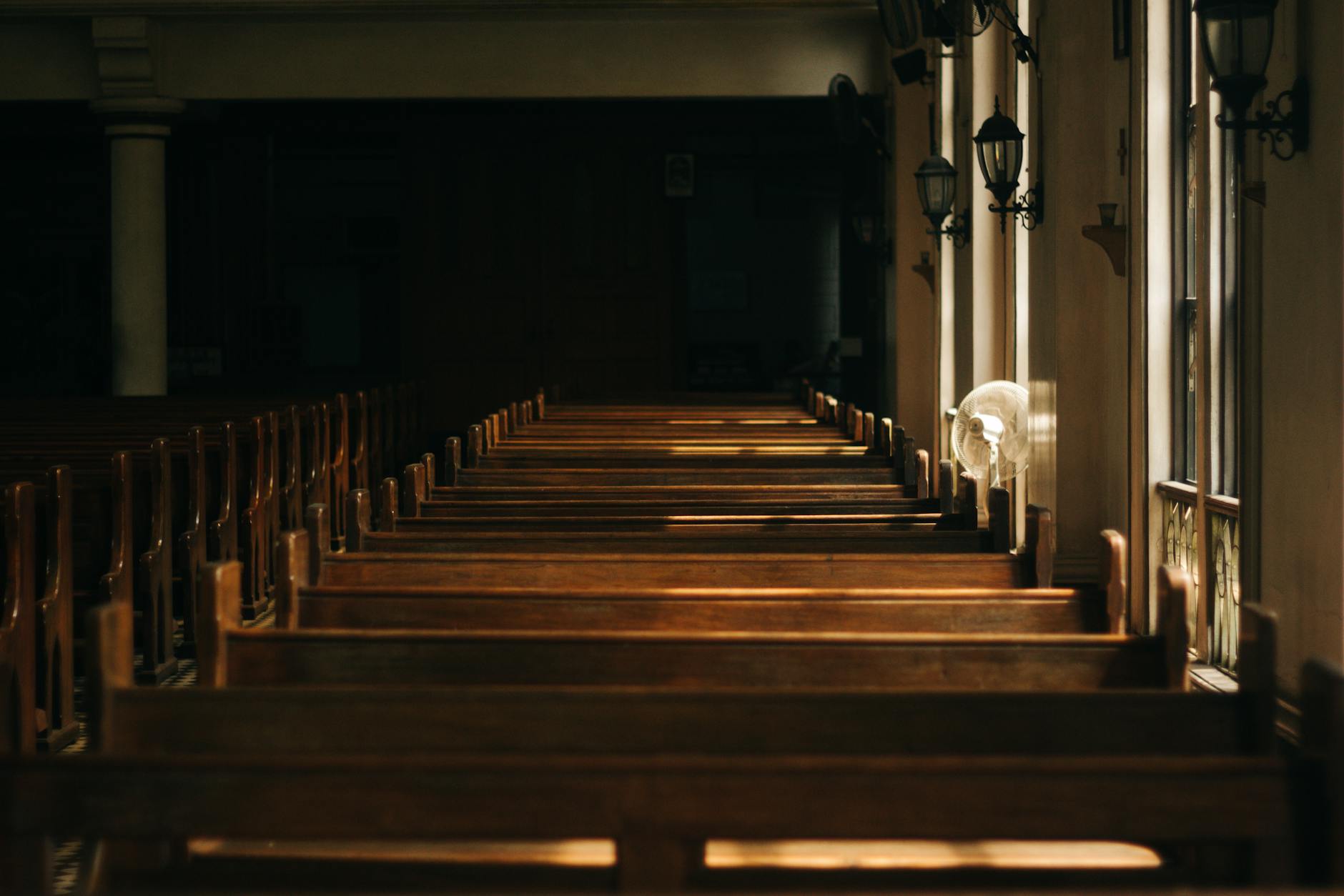Alongside the growth in recent years of (and perhaps not unrelated to) the New Theism, there have been many claims of a Christian revival in the West, particularly among the young. These claims are unconvincing, probably just the fantasy of a dying faith, but they remain quite widespread. (Here, we are concerned with these claims as applied only to young Brits, but such claims about other Western countries in this regard are equally unconvincing.)
The Guardian, for example, recently published an excerpt from a forthcoming book by Lamorna Ash entitled Don’t Forget We’re Here Forever: A New Generation’s Search for Religion. From the excerpt: ‘Not only did I meet a host of people in their 20s and 30s who have converted to some form of Christianity, but I also detected a marked attitudinal shift in how my peers talk about religion compared with the generations that came before us.’ (Ash then goes on to get the New Atheism of Richard Dawkins et al. entirely wrong—even when dating it—but we’ll leave that aside.)
So, is there a Christian revival among Britain’s young? This question has recently been addressed by Richy Thompson and Jeremy Rodell of Humanists UK, and with the kind permission of Humanist UK’s Chief Executive, Andrew Copson, I reproduce both their articles below. The first, by Thompson, was published on the Humanists UK website on 10 April 2025; the second, by Rodell, was also published there, on 17 April 2025. (See the original posts here and here, respectively.) Together, these articles provide some nuance to the Christian revival claims and show how they are, at the very least, much overblown.
~ Daniel James Sharp, editor
Gen Z ‘religious revival’? The evidence is incomplete, by Richy Thompson (10 April 2025)
On Tuesday the Bible Society released a report called The Quiet Revival. It claims that ‘the Church is in a period of rapid growth, driven by young adults and in particular young men’. It argues that, although the share of people identifying as Christian has fallen to 39%, the share going to church at least monthly has risen, from 8% in 2018 to 12% in 2024, and among 18-24 year olds this has gone from 4% to 16%. It referred to these young adults as ‘the spiritual generation’, and that this was happening at least in part due to the need to find community.
But do these claims stack up?
The findings were based on two very large YouGov surveys that are clearly statistically robust. But in terms of growth of church attendance, the data from those surveys is at odds with other (arguably more reliable) data sets – and that throws into question the wider findings.
Are the Church of England and the Catholic Church growing?
Short answer: the evidence does not support this and recorded church attendances are in fact falling.
The survey asked people, ‘Apart from weddings, baptisms/christenings, and funerals how often, if at all, did you go to a church service in the last year?’ Those reporting monthly attendance rose from 3.7 million in 2018 to 5.8 million in 2024 – a seemingly massive 56% increase in adults attending church.
But the survey also reported what shares of this alleged attendance were part of the Church of England, Catholic Church, and Pentecostal churches, in both of those years. This means it’s possible for us to calculate that for the Church of England, the survey reported monthly attendance figures as going from 1.5 million to 2 million – 30% growth. For the Catholic Church, numbers went from 850k to 1.8 million – an astonishing 112% growth!
This isn’t just unlikely – it’s wildly out of step with wider figures
And, unlike the survey results, these wider figures are not self-reported survey data but objective records. Both churches record attendance each year. The Church of England publishes this annually as Statistics for Mission. It measures the size of the ‘Worshipping Community’, ‘defined as those people who attend worship regularly, once a month or more (whether in-person or “at home”).’
The most recent report (2023) records this measure of monthly church attendance as going down from 1.1 million to 1 million. It records average weekly attendance as going from 880,000 to 690,000.
The Catholic Church records weekly mass attendance each year. Between 2019 and 2023, this was reported to go down from 700,000 to 550,000.
Attendance in both denominations has grown from 2020 to 2023, but this is because attendance was massively hit by the pandemic, and has taken some years to recover. However before that attendance was in long-term decline. It has yet to recover to the trendline that might have been predicted pre-pandemic.
We can note two things from this
One is that recorded attendance is and always has been quite a bit lower than reported attendance. This may largely be due to ‘social desirability bias’ – people reporting they go to church more often than they actually do because they see it as a good thing to do and so they exaggerate when asked.
But the second thing we can see is that this gap has grown substantially. Churches have continued to shrink in attendance while the Bible Society survey says it has grown significantly. How can this be?
Why might recorded and reported church attendance figures be diverging?
One possible explanation is the rise of ‘online church attendance’. This wouldn’t have been much of a feature in the 2018 Bible Society survey but could be a big one in 2024. Church of England data does include ‘at home’ recorded attendance but it’s unclear how well such attendance is captured (though it’s worth noting it did fall significantly in each of 2022 and 2023 as people returned to in-person attendance). Nevertheless, it’s possible that the rise in online attendance might explain the growing divide, particularly as young people are much more online and so perhaps more likely to ‘attend’ church online. It’s an open question as to what this online attendance consists of. How much are people paying attention versus doing other things? How long are they staying tuned in?
Other explanations might include that the social desirability of church attendance has changed, and so over-reporting of attendance has increased. It’s worth noting that the Bible Society particularly found growth in reported church attendance among young men – going from 4% to 21% claiming to attend church monthly, compared to 3% to 12% among young women. With Christian nationalism increasingly assertive in the United States, and the likes of Jordan Peterson and other pro-Christian influencers appealing to young men in particular, perhaps church attendance is seen as desirable by a growing minority of this demographic.
We don’t have reliable recorded attendance figures for Pentecostal churches, but the Bible Society reported monthly Pentecostal attendance as going from 150,000 to 600,000 in the timespan – a massive quadrupling – a 292% increase to be precise. Of course, not all Pentecostals are immigrants. But even if we don’t accept these figures as true, it’s highly plausible that growing immigration accounts for a meaningful portion of these changes. The countries people immigrate to the UK from changed after Brexit – fewer from Europe, more from Africa and South Asia – and this may well be a factor.
More research is needed to disaggregate how different young people claim to be attending church and who they are, and recorded attendance by age demographics, in order to tell what is going on.
Are young people a ‘spiritual generation’?
The growth in the share of people who identify as religious in the Bible Society survey is notable and worth considering. But are 18-24 year olds a ‘spiritual generation’, as asserted?
It’s a complex picture. Clearly many young people, as has always been the case, are searching for meaning. There is some data – such as the World Values Survey – to suggest that Gen Z is more interested in existential questions, and that their attitude to religion may be marginally more syncretic and eclectic than older generations. Emeritus Professor of Social Science at UCL David Voas told the Guardian in 2023 it was a ‘fascinating puzzle’ that Gen Z ‘were more likely than older people to call themselves atheists, but also to say that they believe in hell’.
But if ‘spiritual’ is a synonym for ‘religious’, then the answer to the question would very much be ‘no’. Even by the Bible Society’s own figures, most of Gen Z don’t claim to believe in god, less than a third say they are Christian, and only 1 in 6 of them say they go to church – and the latter stat, as we say, when compared with real church attendance figures, shows up as highly dubious anyway. So while there is an uptick in some of those figures compared to 18-24 year olds a few years ago, it’s worth not over-stating the significance of this change.
What does this mean for public policy?
The UK remains a highly diverse country where most people are not Christians and yet the state remains very Christian, out of keeping with society. The bottom line remains, the state urgently needs reform to reflect the diversity of beliefs common in the UK today. That particularly means looking at the place of religion in state institutions, like Parliament and our schools.

Young Brits are searching for meaning, not religion, by Jeremy Rodell (17 April 2025)
The Bible Society’s The Quiet Revival report is both interesting and controversial – interesting because it claims that there is an increase in churchgoing, controversial because, as Richy Thompson’s article makes clear, there is a profound mismatch between these supposed increases, and the actual noted decrease in real church attendance reported recorded by the churches themselves.
What to make of it?
Seen as a social phenomenon, religion has three main dimensions: belief, belonging, and behaviour. As we know from the British Social Attitudes Survey and the Census, self-identification with Christianity has declined in the UK over many decades – that’s ‘belonging’. The Bible Society’s study is instead focused on religious practice (‘behaviour’), although it also reports on belonging and belief. It puts Christian identity in 2024 at just under 40 percent, below the 46 percent in the 2021 Census. Nothing new or controversial there.
On belief, it reports that the proportion of people who think there is ‘probably’ or ‘definitely’ a god/gods or ‘some higher power’ went up from 38 to 42 percent between 2018 and 2024, the two years on which the study is based. For 18-24 year-olds it reports a surprisingly big jump from 28 percent to 45 percent. But the question covers a wide range of broadly religious and supernatural beliefs, not only those associated with organised religion. It tells us little about belief in the core tenets of Christianity.
When it comes to practice, levels of churchgoing have always been below levels of Christian identity. The study confirms that attending church remains a minority pursuit: nearly 90 percent of people in England and Wales say they are not churchgoers. The interesting finding is that those who say they are churchgoers have increased significantly, albeit from a low base. Overall it is up from 8 percent in 2018 to 12 in 2024. But for 18-24 year olds it is up from 4 percent to 16 percent, and 21 percent among young men. Although that means 84 percent of 18-24 year olds still said in 2024 they were not churchgoers, it is nevertheless a large increase.
The picture on church attendance from other sources can be confused by the fact that it has been recovering from the impact of Covid-19 over the past few years. A good example is a headline in the Catholic journal The Tablet in January 2025, which said ‘Big increase in Mass attendance recorded in Britain’. It turns out just to be referring to an increase between 2022 and 2023. In fact, the 2023 figure for mass attendance (555k) remains a long way below pre-Covid 2019 levels (702k). In contrast, the Bible Society study data indicate that Catholic attendance rose from 850k in 2018 to 1.8 million in 2024.
You would think the Catholic Church would have noticed nearly a million more people attending in 2024 than in 2018. There’s a similar story with the Church of England. Here the Bible Society reports the Anglican share of churchgoers dropping but the absolute number increasing by 460k (because of the increase in the overall number of churchgoers). But the Church’s own Statistics for Mission annual report shows a decline in weekly attendance from 2018 to 2023 (the most recent year available) by 189k. It is a puzzle.
In a discussion on the report hosted by the Religion Media Centre, even Christian commentators struggled to explain why such a big increase in attendance is not being observed by the churches.
Rhiannon McAleer, one of the report’s authors, highlighted that their polling, conducted online by YouGov, used a different methodology to the churches, whose figures are based on actual counts. Christopher Gasson, a Christian author and pollster, said that he had found that ‘young people claim to be attending church, but clearly they are not’. He found the effect most marked in inner cities, where social expectations to attend largely non-traditional churches can be high.
In other words, at least some of the discrepancy might be explained by the difference between aspired and actual church attendance. But, as the study points out, why would that effect be so much bigger in 2024 than in the 2018 baseline year? Maybe social influencers such as Jordan Peterson have had more of a role than we think. Maybe some respondents were not entirely clear in their own minds about which church denomination they aspired to attend, skewing the denominational data. We don’t know.
Are other factors in play?
As Richy said in his earlier blog, it would also be surprising if the introduction of online participation in church services has not had an effect. We do not yet know how significant it is, or how to assess the associated levels of commitment. It is clearly a new feature, and in theory more likely to be used by younger people, but no one is suggesting it is sufficient to explain either all the reported increase, or the misfit in the figures.
Immigration is another factor. Most immigration is from countries with higher levels of religious practice than the UK. So the higher levels of immigration we have experienced in recent years would be expected to have impacted the churchgoing data. There is an increase in non-white ethnicity in The Quiet Revival sample weighting between the 2018 figures, when it was based on the 2011 census, and 2024, when it was based on the 2021 census.
We know from the Hope Together: Talking Jesus survey (conducted by Survation for a evangelical groups in 2022) that even during that Covid-19 period, while 19 percent of white British Christians attended services in person or online, the figure for other ‘white minorities’ was 28 percent and for non-white ethnic minorities it was 48 percent: a massive difference. But an increase in the share of the population from communities with high levels of religiosity does not seem to explain all, or even most, of the increase, nor does it explain the discrepancy with the data from the churches.
The search for meaning is real
Something is going on. It is clearly overblown to claim, as the Foreword to the Bible Society study does, that ‘the “tide of faith”, whose “melancholy, long-withdrawing roar” was described by Matthew Arnold, has now turned’. 60 percent of the population does not even identify as Christian, nearly 90 percent do not go to church, and the two major churches are reporting overall declines. Most young adults are still atheists. But it does appear that their belief in some sort of higher power has gone up.
But even if self-reported churchgoing figures are unlikely to be accurate, they may still tell us something. The fact that young men in particular reported big increases definitely needs to be explored.
And what of the increase in young people who believe in gods or ‘some higher power’?
In a world of uncertainty, where loneliness, isolation, and anxiety are common, maybe it is not surprising that some people turn to religion or supernatural forms of spirituality, or a combination. But it is far from clear that these eclectic beliefs represent a sea change among the young, or that Generation Z will reverse the decade-on-decade trend of secularisation witnessed since the 1940s.
The study also reports that, while 38 percent of the overall population agree that ‘society is better when it is shaped by Christian values’, that drops to 32 percent among 18-24 year olds. And a third of them think that the Bible is actually a source of harm in the world.
Human connection
What does this mean for humanists? We’ve known for some time that we are living in a heavily online, increasingly atomised society. And there is no question that we are living through an era of disorder and profound uncertainty – environmental, political, technological, and economic.
Public health data suggests this is all having a tangible impact – with NHS England concluding that likely one in five young people suffered with mental health disorders in 2023. In an era of anxiety, is a shift towards existential questions all that surprising?
Along with meaning, the other human need at play here is connection – we are social animals. We need real people, and real communities. Social media alone is not up to the job. Many people meet that need through sports, politics, campaigning, the arts, and any number of other activities, including religion. And there are humanist communities all over the country. At the same time, much of the world’s most sophisticated software is deliberately designed to keep our attention locked onto our screens at the expense of real human connection. That is an issue for the religious and non-religious alike.









Your email address will not be published. Comments are subject to our Community Guidelines. Required fields are marked *
Donate